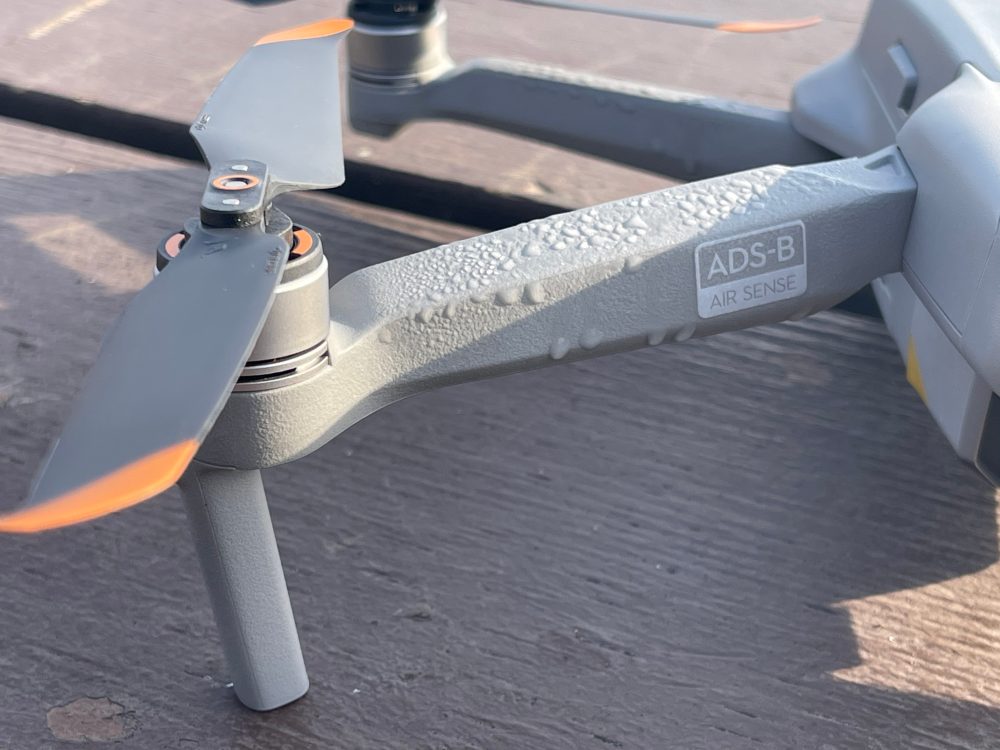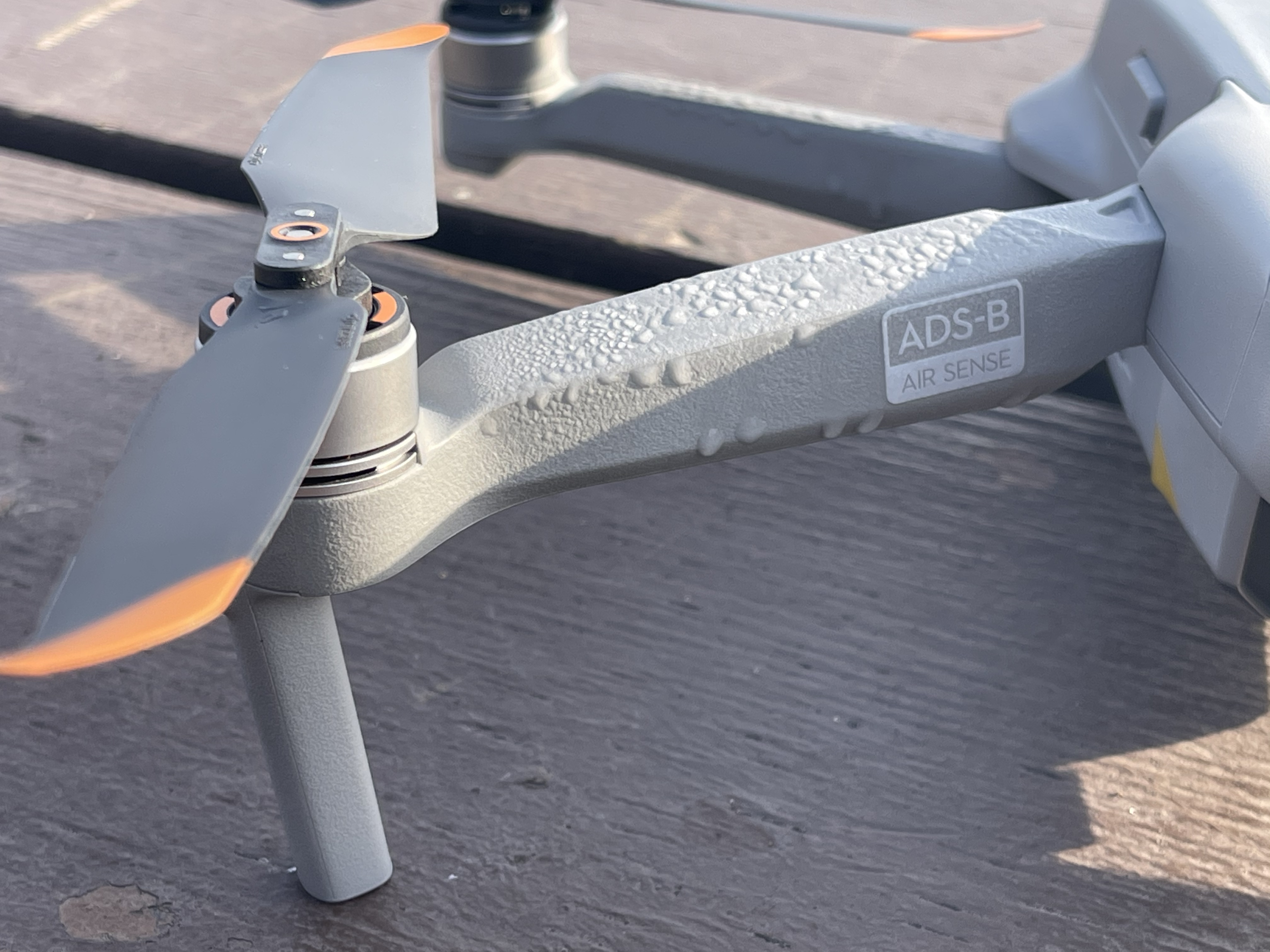If you liked the Mavic Air 2, you’re going to love the Air 2S. It’s a substantial improvement on what was an already-great drone.
If you’re looking for a package that has pretty much everything at a reasonable price, this may well be the ticket for you. DJI has packed a lot of upgrades into this drone, including a significant boost to camera specs, sensors and automated features. It weighs in at 595 grams, so you’ll need to register it in North America (and some other countries).
It won’t be for everyone, but at $1299 for the Fly More Combo and $999 for the basic drone kit, it has a lot to offer.
Oh, for those of you who had plans to buy more than one, you’ll be out of luck. DJI’s site says: “Due to limited new product availability, each customer can only purchase one unit. Additional orders after one unit have been purchased will be cancelled.”
With this drone, however, one is enough.
The ‘Big Picture’
This drone can take one, with its 1″ CMOS sensor and 20MP stills, a previously-leaked feature that has prompted many to sell their Mavic 2 Air drones in order to buy the latest and greatest. And make no mistake, this really is a great little drone for a number of reasons: It combines size and performance with advanced safety and imaging options. All that, in a package where everything you need fits in a small case that would be easy to sling over your shoulder for a day of shooting.
Here’s what the company says:
Every creator remembers what it felt like to fly a drone for the first time, and they’ll feel the same sense of wonder and possibility when they first experience DJI Air 2S’s unparalleled mix of astonishing flight capability and gripping image quality. DJI Air 2S is a wish list come to life for everyone who demands more from a drone, showcasing upgrades that truly elevate the system into a highly versatile drone. From content creators, to drone enthusiasts and travelers, we are confident that a lot of people will be excited about this drone.
Ferdinand Wolf, Creative Director, DJI Europe
Now, you’d expect the company to say something like that. After all: Marketing. But about a month ago, a source of ours in China told us he was really excited about this product launch. Why? We’ll let him tell you:
He meant “expensive,” not “expansive.” But many pilots will indeed see this as “probably the best drone of the year.”
Snapshot of key improvements
We’ll be exploring in more depth below, but for those of you itching for the highlights (many of which have been leaked) here they are again:
- New 1″ Sensor with “true” 20MP stills
- 5.4K video: The most compact drone on the market (says DJI) to achieve this resolution
- Additional obstacle detection sensors
- Low-latency O3, a new version of OcuSync
- “MasterShots” – an automated cyberpilot/video editor that works in conjunction with DJI FLY
And more. Yes, much more.
Camera
This is the biggest overall feature of the new drone – and why some have already been selling their Mavic Air 2 models to get the latest and greatest. The tagline for the product is “All for One” – a reference to the new 1″, 20 MP sensor.
This might confuse some of you. Wait a minute, you might think: Didn’t the Mavic Air 2 have a 48MP sensor? It should be better, right?
Yes, it does have – on paper – a higher resolution. But the Air 2’s Quad-Bayer filter sensor doesn’t produce what purists would call a “true” 48MP image, at least not when compared with the images that come from a 48 or 50MP sensor found in, say, a DSLR camera. So in this case, rest assured, the 20MP sensor in the new Air 2S is better than its predecessor. (If you really want to geek out on this topic when you’re done the story, come back to this link for an explanation).

The pixels on the new sensor are larger, at 2.4µm – compared with the 0.8µm pixels on the Mavic 2 Air. So what does this mean? Well, larger pixels capture more light – which in theory reduces overall noise levels. But the arguably greater advantage is better sensitivity in low-light conditions. (As an FYI, a micron is one millionth of a meter. The thickness of a human hair is about 70 microns.)
Of course, the greater the number of pixels, the greater the resolution. So if you want to use larger pixels you’ll need a bigger sensor. DJI opted to put a 1″ sensor into the Air 2S, and that’s good news.
Hasselblad?
The information on the sensor provided by DJI at launch makes it appear to be the same sensor used in the Mavic 2 Pro. Both are 1″ sensors with 2.4 micron pixels. But the camera does not contain the Hasselblad name featured so prominently on the Mavic 2 Pro, indicating that while the sensor might be the same, some of the other Hasselblad secret sauce is not included in the Air 2S. There’s much more to a camera than just a sensor.
The lens is slightly wider when compared to its predecessor – 22mm vs 24mm. There’s the slight distortion you always get with a wide-angle lens, but we actually like the look of the wide in the stills we captured. Like the Mavic Air 2, the new drone also features an f2.8 fixed aperture, which may disappoint some who’d hoped for a variable aperture.
The Mavic Pro, in addition to whatever Hasselblad secrets are in the recipe, features a variable aperture (f2.8-f11). So for professional aerial cinematographers, the Pro 3 (which we anticipate will have a variable aperture) will likely be a better choice when it’s released, presumably later this year. But the Air 2S FlyMore Combo ships with a set of four neutral density filters, so you’ve at least got those to help you out.
The dynamic range is 12.6 stops for RAW photo, and of course features bracketing options (three or five exposure stops). We didn’t test HDR photos yet, but we did get through nearly everything else.
Photos
The quality of still images straight out of the box is impressive. The colours seems accurate and its dynamic range capabilities ensure it doesn’t struggle too much with scenes that run the gamut from deep blacks to brighter areas. There’s plenty of detail and for the majority of drone pilots, this camera will be more than good enough – and a significant jump from the Mavic Air 2.
We were fortunate in that our friend and fellow pilot Patrick Morrell got some great shots while evaluating the drone. He was kind enough to share some of them with us. Take a look:



Video
This is probably the second biggest improvement of the Air 2S, and why it’s likely to be popular with cinematographers looking for a compact flying camera. Video resolution jumps from 4K/60 fps to 5.4K, 30fps (reminder to self: buy larger capacity Micro SD cards).
But do you really need 5.4K? Well, it’s great to have the option. If you’re working on a project where you know your final output will be 4K, you’ve got some flexibility for cropping while still maintaining a true 4K output.
Video transmission uses OcuSync 3.0, now renamed as O3. It’s capable of broadcasting 1080p back to your phone or tablet over a distance of 12 kilometres. Given that legal flights should be carried out within Visual Line of Sight of the pilot, that kind of range ensures any missions you carry out in VLOS should have rock-solid video transmission.
O3 is the same transmission system used with the DJI FPV drone, and is lower latency than OcuSync 2.0.
Intelligent functions, new features
Drones are getting smarter. And DJI has made this one pretty brainy. It has a host of core intelligent features and functions that take what came with the Mavic Air 2 and up the ante considerably.
In addition to the QuickShots feature that feature in the Mini 2 and Mavic Air 2, the Air 2S – in conjunction with the latest version of the DJI FLY app – is like having a cinematic autopilot and video editor all wrapped up in one tidy bundle.
MasterShots
Select MasterShots in a drop-down menu under Video, and you’re in for a surprise. If you want the drone to proceed, it heads off on a flight lasting roughly three minutes. During that flight, it shoots the chosen subject or object (which you define onscreen) from a variety of angles, and appears to even use its digital zoom as part of the game.
Once it’s done, DJI Fly offers you a multitude of choices for templates and music. You can preview the templates on your phone or tablet, then select one. Got it? Great. Give the app the okay and it will create an edited video that goes with music and is ready for export or social media sharing.
At first, to be honest, we thought this was slightly cheesy. But once spent some time with it, we realized it’s actually a pretty great tool for people who want to capture a quick video on the fly without having to really do anything. No pulling cards, no video editing software, no finding Royalty-Free music. You simply make a couple of clicks and the software does the rest.
What’s even cooler is that you can export one version, and then select a different template if you’d like to try another video with the same captured content. It’s a great way to produce a quick video that looks good, and we think it will resonate with a lot of people who want to capture some memories without having to spend a lot of time capturing shots.
It’s a fully automated, end-to-end process. All you have to do is select the template you like.
APAS 4.0
APAS stands for Advanced Pilot Assistance Systems. It’s a combination of hardware (sensors) and software that allow the drone to map its environment and avoid obstacles in real-time. DJI has added two additional sensors to the Air 2S, and the company says APAS 4.0 (some other DJI drones are equipped with APAS 3.0) is suitable for flying even in complex or narrow environments.
We didn’t have a chance to test that part of APAS 4.0, but we can tell you APAS saved us from hitting a branch we didn’t see: The drone simply stopped in the air and hovered (though you have option within the app to have the drone bypass obstacles rather than simply brake).
You’ll notice, if you haven’t, that those additional sensors on the top are angled. They’re positioned so that if you’re in forward flight, with the nose pitched down, they are “seeing” directly in front of the drone’s path. It’s a somewhat unusual looking combination, but they get the job done.
Intelligent Shooting Modes
The drone has three modes worth touching on: Spotlight 2.0, FocusTrack 4.0 and POI 3.0.
Spotlight 2.0 is pretty cool. Select the person or object you want in the “spotlight.” Once engaged, you can go ahead flying the drone without worrying about the gimbal. The gimbal will stay locked on the subject and makes pulling off a spectacular shot a lot easier.
ActiveTrack 4.0 also allows you to select a person or vehicle. Once locked on, the drone will autonomously follow them while maintaining a safe distance. In conjunction with the additional sensors and the APAS 4.0, DJI says you can be confident this will safely and intelligently track a moving object. We had hoped to try this out with a cyclist or runner, but had to settle for following ourselves. It worked great, but we’re not as speedy as a mountain biker. We found that the Mavic Air 2 sometimes had trouble staying locked on a moving target, but it was using a previous generation of this feature. We have high hopes here.
Point of Interest 3.0: Pick something – anything. A person, a car, a building. Tell DJI FLY you’d like to use the POI feature. The drone will fly circles around your heart’s desire while keeping a steady gimbal lock on the subject.
Safety
In addition to the overall safety features we’ve come to know and love (and which some find restrictive), the Air 2S also features Air Sense, its name for ADS-B detection. ADS-B is like an electronic megaphone that most manned aircraft are equipped with. Should a Cessna or helicopter equipped with an ADS-B transponder approach your area, you’ll receive a warning on the app. This is a tremendous safety feature that we truly applaud.

Overall impressions
We liked the Mavic Air 2 a lot, so we had high hopes for the Air 2S.
We weren’t disappointed.
First and foremost, this drone has a much more capable camera than we saw with the Mavic Air 2. The addition of a 1″ sensor, 5.4K video resolution and 20MP stills, is huge. If you’re someone who’s into the quality of the images and video they capture, you’ll notice the difference. It can still struggle on occasion with highlights, but with the included Neutral Density filter kit in the Fly More Combo and a bit of care, you’ll be fine.
DJI has significantly upped its automation game with this drone, allowing it to carry out cinematic, autonomous flights while being aware of its environment and avoiding obstacles. Its AirSense will warn you of potential conflict’s with ADS-B equipped manned aircraft, and the drone appears to be fully ready for Remote ID.
Plus, the thing folds up in a convenient size that’s perfect for travel, camping, or simply a day at the park.
One of our sources in China told us, long before we’d seen this drone, that it was the best thing yet from DJI this year. Having seen it and flown it, we tend to agree. We really like this drone.
And we’re confident many of you will, as well.
Written by Scott Simmie | 15 April 2021



















